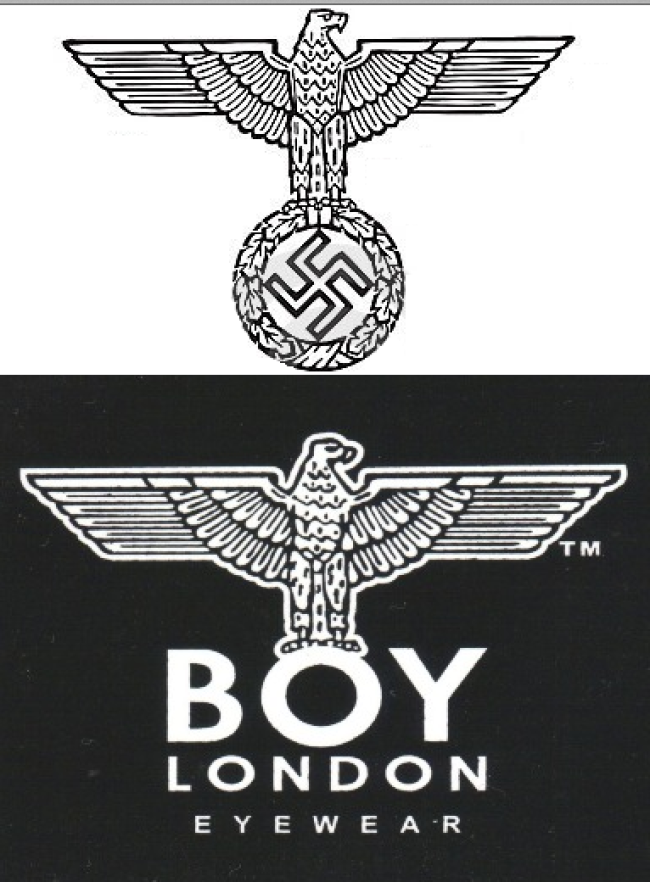Boy a fashion brand established in 1977 by Stephane Raynor, has made it’s way into popular fashion. The logo of this brand sparks massive debate about the use of the Parteiadler – The Nazi Party Eagle.
The following Image posted by Marriott (2012), displays the logo of the Parteiadler (Nazi Eagle) on top, and Boy’s Fashion label using the very same eagle. The signified aspect of the image represents the Nazi’s, however this has connotations of punishment, repression, fear, death and power. Not only does the Eagle have contextual links to the Nazi’s but also to Rome, and it’s once mighty empire, which stretched from Spain in the Far East to Asia Minor in the West. This allows us to make assumptions that the Nazi’s wanted to replicate former glories of powerful civilisations, in order to make the world Germany. Boy see’s this ideal of global domination as a way of making the world wear their brand, resulting in power. “They all bought BOY shirts and BOY knives running around like wolf packs burning, looting, killing it spread everywhere that summer” (Burroughs, 1971). This excerpt from the book The Wild Boys written by William Burroughs communicates this ideal of product and consumerist domination. They have achieved this notion of power by using a very controversial logo, which has given them notoriety in the fashion world.
The denotation of the left facing eagle brings up historical links to the Nazi’s, and their leader Hitler. Here we instantly picture the German war machine that swept through Europe, killing of 6 million Jews as part of their regime. “Boy’s modern consumers, unlike their 1970s counterparts who knew the connotations of the symbol they wore and who wore it as a cultural statement” (Marriot, 2012) This excerpt captures the problem with wearing such an infamous sign, for the history and context decide whether it can be classified as controversial or not.
Burroughs, W.B, 1971. The Wild Boys: A Book Of The Dead. 1st ed. United States: Grove Press.
Daniel Marriott. 2012. Extremist Symbolism in Fashion – a Cultural Statement or Unacceptable? You Decide…. http://www.huffingtonpost.co.uk/daniel-marriott/extremist-symbolism-in-fashion_b_1930025.html. [Accessed 01 April 14].
Now or Never! The 2nd Worst Anarchist Website In The UK. 2013. Leave the BOY Alone. http://www.nowornever.org.uk/leave-the-boy-alone.html. [Accessed 30 March 14].
